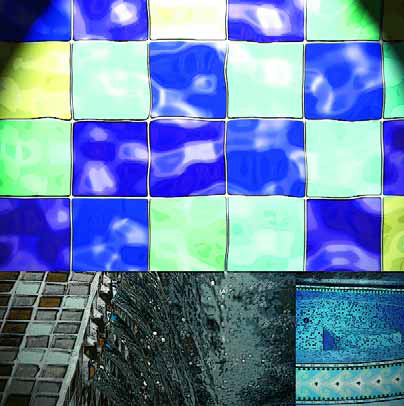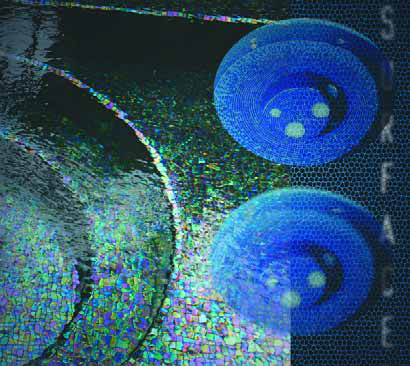glass
I know I've quoted or paraphrased Ernest Hemingway on this point before, but it bears repeating once again: Anything that was ever any good, you pay for. I'd go so far to say I've based my entire business philosophy on that basic idea. For one thing, there's an essential truth to what he's saying. For another, I see its clear application to watershaping on a variety of levels - particularly when it comes to the materials we use in creating our "art." Indeed, a huge part of giving clients the unique elegance and beauty they so often crave involves understanding and appreciating
All artists and designers have to come from somewhere, creatively speaking. In our case, we came to watershaping via the world of glass arts and crafts, a starting place that led us first to create unusual sculptures in glass and light - and then to carry our work out into landscapes and especially into settings that feature water. In collaborating mostly with architects and landscape architects and designers, we at SWON Design in Montreal have found what we believe to be an incredibly rich vein of aesthetic potential. Indeed, we have come through the years to recognize with greater and greater profundity that water
Value is measured and determined in a variety of ways. When it comes to pools and spas, for example, I'd say that the straight-dollar value is only one of several yardsticks and that, for many clients, it's no longer the one that tops their lists. Instead, beauty, health benefits, artistic merit, pride of ownership and emotional appeal are more important than price tag for many of them - a wonderful trend, to my way of thinking. These measures of value, of course, are highly subjective. Every client is a little bit different, and the relative value of non-monetary factors can be
As a designer, I've always sought out exceptional finish materials to use in my projects. My background is in fine arts, and I've worked in the design/build business for years, creating high-end exterior and interior spaces and taking pride in finding surfacing products that excite my clients and beautify the work. Operating in south Florida, however, I kept running into so many limitations on what was available that it had the effect of limiting my creativity. Natural stone can be hard to come by in adequate supply where I live, for instance, and as much as I like tile, it doesn't fill the bill for every job. Anything's available at a price, of course, but even
It's right up there for longevity in the history of building materials with marble and concrete: The use of glass tile, in fact, dates to the Roman Empire and traces its path through widespread use in Byzantine art in the eastern Mediterranean before finding its way back to a primary role in the art and architecture of Renaissance Italy. From ancient times forward, glass tile has always been associated with beautiful and enduring works of art. Now enhanced by some modern-day manufacturing practices that serve to bring out its incredible gem-like features, the material still holds faith with all those centuries of tradition while reaching
As a designer and artist, I believe that water and glass walk hand in hand: Both are transparent and translucent. They distort and reflect surrounding colors and forms. And depending upon whom you ask, water and glass are both liquids. The visual and physical resonance between these two fascinating materials is important to me: I know that their interplay adds an entirely different dimension to my work that enhances the effects I can achieve using glass, metal and ceramics, so I'm always eager to explore artistic solutions when my customers want the project to include water. In this article, I'll examine three of my projects that use water to accentuate and reflect the sculpture while providing the soothing sounds that create an overall feeling of peacefulness in the surrounding space. But first, a bit more about what I do - and how I do it. AHEAD OF THE GLASS As with many forms of sculpture, working with glass requires technical know-how and, like many modern artists, I have acquired a background in construction and fabrication techniques. Back in school my



















